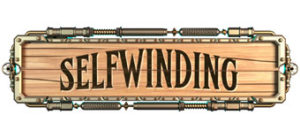One of my favorite things every week is going to writing group. Even though I write every day, there’s something special about meeting with other writers to write. But attending a writing group—especially a weekly one—can be a big time commitment in our busy lives. Finding the right group, a group that will be productive and help me achieve my goals, has taken some time. I first had to figure out what I wanted from a writing group, and then I needed to find a writing group that provided those things.
In my experience, writing groups tend to focus on one or more of the following:
- offering time to write
- networking or socializing
- critiquing or feedback
When I first started attending writing groups, I was working a full time job (with frequent overtime) and had a calendar full of family and social obligations. I needed a writing group that would emphasize productivity over all else since often the time I spent at writing group was the only time I had to write all week.
The group I found was full of passionate, wonderful writers who participated in NaNoWriMo every year and who were seeking agents or publishers. Their attitude matched mine—aspiring to publish novels—and their experience writing query letters, self-publishing, and working local conventions formed a foundation of what it meant to be a working writer.
Over the years the group membership changed, people moved away or new writers joined the group, and the dynamic slowly shifted. If I arrived early, I could get a solid hour of work in before the meeting turned into social hour. The problem wasn’t socializing—I liked these writers!—but this was the majority of my writing time for the week, so having that time taken over by socializing was frustrating.
It took me awhile to admit it, but my writing group was no longer providing what I needed. And that’s an important thing to remember—if the group dynamic changes, it’s okay to leave.
I’m currently active with two writing groups. One group meets weekly and the other group meets monthly. Both groups are focused on productive writing tasks (which can include things like promotion, presentations, or managing author websites) and are patronized (primarily) by writers who have a goal to publish. The weekly group has the laid back style of the first writing group I joined, in which writers are encouraged to be self-directed. We poke writers who seem to be staring off into space or who appear to be off-task (we are all guilty of checking Twitter or Facebook), but we mostly chat as we get settled or when we’re packing up.
The monthly group uses twenty-minute sprints to get writers to focus, and then allows chat breaks in between sprints. I wouldn’t be happy writing like that on a weekly basis, but for a monthly group, I know to come prepared because I will be getting a lot of work done. (That monthly writing group is usually my highest word count day of the month.)
I have yet to be in a critique group outside of the MFA program, but based on my experience there, I know a critique group would have to be very special. Critique groups require a lot of dedication from all participants. The group itself needs to be big enough that if someone is sick one week, you haven’t lost the whole conversation, but small enough that you’re not piling on a ton of extra work. Also it helps if everyone is familiar with the genres being submitted for critique. While writing is writing and stories are stories, being familiar with the rules and tropes of a genre can greatly improve the confidence of the readers and the quality of the critiques.
Knowing what you want out of a writing group is the best way to find the right group. I’ve been very lucky to find such amazing writing groups, most of which I found by participating in NaNoWriMo. If you’re struggling to carve out time to write or lack motivation once you sit down, consider finding a writing group. And if you can’t find the right writing group for yourself, maybe you should just start your own.
